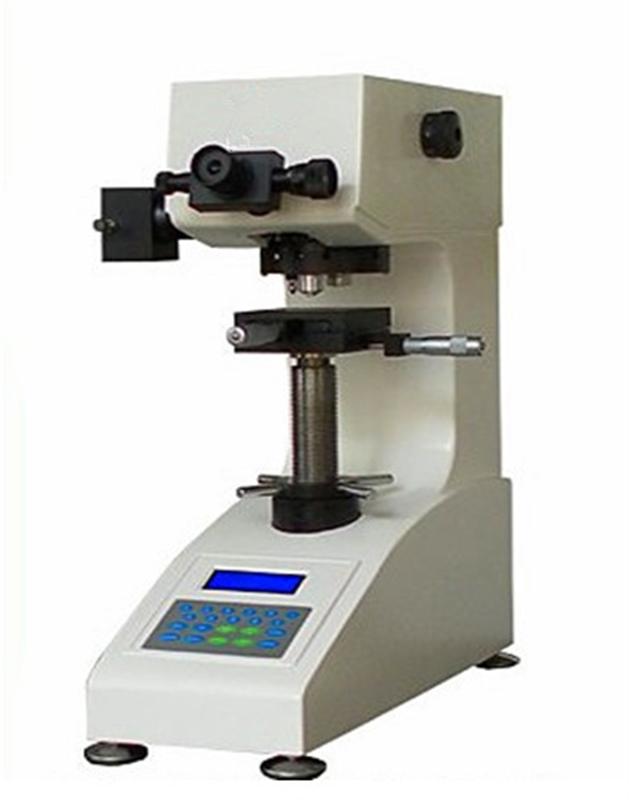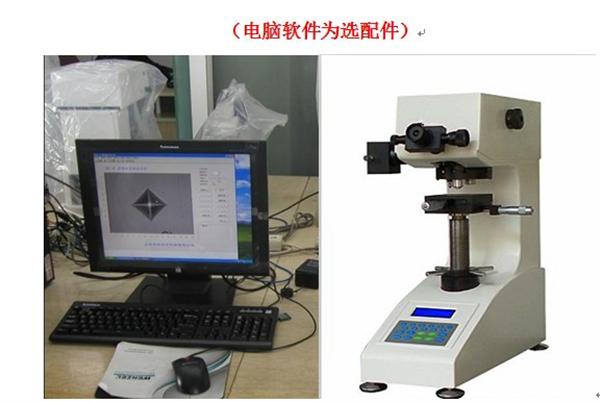Hardness test and method study of oxide film
·
In order to improve the wear resistance of aluminum alloy parts and extend their service life, the hard anodizing treatment of aluminum alloys highlights the importance of accurately measuring the thickness and hardness of the oxide film. This ensures that the hard oxidation process is carried out effectively.
1. Factors Affecting the Performance of Road Alloy Hard Anodized Film
Under low temperature conditions, the electrolyte is typically a sulfuric acid medium with finely tunable micro-pulsed direct current. This process results in an oxide film on the surface of aluminum alloy workpieces with a thickness of ≥0.04mm and a hardness of ≥350HV, providing excellent wear and corrosion resistance.
The hardness of the oxide film is the main factor affecting its wear resistance, followed by its thickness. The hardness is not only related to the type of aluminum alloy and the oxidation process but also directly influenced by the film's thickness. However, research has shown that thicker films do not always mean better performance. Once the oxide film becomes too thick, its hardness tends to decrease. In production, excessively thick oxide layers can lead to cracking, which reduces adhesion to the base metal and negatively affects the mechanical properties of the alloy. Therefore, accurate measurement of oxide film thickness is essential for improving overall performance.
2. Design and Testing of Oxide Film Thickness and Hardness Measurement System
As a destructive testing method, the data obtained from oxide film hardness tests must be both reproducible and accurate. Many factors can influence the results. If the measured microhardness values fluctuate widely or differ significantly from expected values, the test loses its practical value in production settings.
Test results of oxide film thickness and hardness for different materials (see table) show that designing an effective testing system is crucial for ensuring smooth oxidation of aluminum and its alloys. For this purpose, it is recommended to use the HV-1000Z Automatic Turret Micro Vickers Hardness Tester and the HVS-1000Z Digital Automatic Turret Micro Vickers Hardness Tester as primary equipment.
During system design, the following requirements are emphasized:
(1) Prepare samples that meet technical specifications. Operators should be familiar with the test instruments and follow operational standards. Determine test point locations and select appropriate loads, while planning the test data carefully.
(2) Create custom sample fixtures to ensure the perpendicularity of the oxide film section and the testing instrument, thereby improving test accuracy.
Table 1: Test Results of Oxide Film Thickness and Hardness for Different Materials
| Material grade | Oxide film thickness /mm | Microhardness /HV |
| Industrial pure aluminum | 0.03~0.07 | ≥800 |
| LF21 | 0.07~0.12 | ≥600 |
| ZL401 | 0.03~0.07 | ≥350 |
| ZL402 | 0.07~0.12 | ≥300 |
| LD2 | 0.03~0.07 | ≥350 |
| LD5 | 0.07~0.12 | ≥300 |
Product Description: HV-1000Z Automatic Turret Micro Vickers Hardness Tester

Features:
The housing is made of integral casting and machining. The hole-punch alignment uses a knife-type straight-through design to ensure concentricity and coaxiality, laying a solid foundation for high precision and stability. The light source is a special high-definition imaging system, providing uniform and clear illumination, reducing measurement errors caused by indentation printing. The interface uses a menu structure, allowing users to select between HV or HK hardness scales and manually input the displayed values. Various hardness values can be converted into each other.

Technical Specifications:
| Hardness scale | Vickers, Knoop |
| Test force | 10-25-50-100-200-300-500-1000gf |
| Test force selection | Manual |
| Executive standard | Meets EN-ISO6507, ASTM E384&E92, JIS standards |
| Loading and unloading method | Automatic |
| Burden time | 0-60 seconds adjustable |
| Turret | Automatic |
| Micrometer eyepiece multiple | 10X |
| Measurement resolution | 0.5 μm (Drum reading) |
| Objective magnification | 10X 40X |
| Total magnification | 100X (Observed), 400X (measuring) |
| Measuring range | 150 μm |
| Optical channel | Dual channel /CCD |
| Filter | Green light source |
| Halogen lamp (brightness adjustable) | |
| Hardness value resolution | 0.1 Vickers unit |
| Hardness conversion | Brinell, Rockwell, surface Rockwell |
| Maximum height of the test piece | 90mm |
| Depth at the centerline | 120mm |
| XY test bench size | 100X100mm |
| XY test bench moving distance | 25X25mm |
| XY test bench minimum displacement | 0.01mm |
| Operating temperature | 23 ± 5 °C |
| Working humidity | <65% |
| Host size | 530mmX290mmX490mm |
| Hardness tester | 40Kg |
| Power supply | 220V 2A 50-60HZ |
* Software is optional:
Introduction to automatic hardness tester software

One, Use: Applicable to steel production, shipbuilding, automobile manufacturing, aircraft manufacturing, high-pressure vessels, electrical equipment, bearings, standard parts, hardware textile accessories, and instrumentation accessories, and other related to metal materials products. The software provides analysis results that help enterprises establish more scientific quality control bases, improve management levels, and enhance their image. It is an effective tool for companies engaged in new technology development and product quality monitoring.
The software can also serve as an effective tool for theoretical teaching, experimental analysis, and basic scientific research in scientific research institutions, manufacturing plants, and universities involved in metal materials.
Second, Function: Computerized image analysis system for precise correction and gradient plotting. It can also measure using eyepieces. Output includes measurement data, images, metallographic graphics, and hardness gradient maps, which can be printed or saved. The machine combines a computer measurement system and a hardness tester into one integrated measurement and image analysis system.
* The hardness of the test indentation is measured through software conversion of the signal.
* Capable of testing Vickers, Brinell, Knoop, carburized layer, nitrided layer, etc.
* The indentation image can be adjusted for contrast and brightness.
* For samples with poor finishes, edge detection operations can be performed.
* Indentation can be magnified up to 2× for more accurate measurements.
* Image files and data files can be opened, stored, and printed separately in Chinese and English, and data can be transferred for Excel document processing and more.
* Data and image files can be viewed at any time, and data can be printed in tables and curves.
* High or low magnification objectives can be selected as needed.
* Compatible with WIN9X, WIN2000, WINXP, and other operating systems. Can be configured with various micro hardness testers, including various Vickers/Knoop hardness testers.
With measurement length, angle attack energy, and can be used simply with a projector.
Third, Complete Set:
1. Image sensor camera (Japan Sony chip color 1/3 HD CCD700 Line) (standard) – Japan HD JVC camera (high match) matching
2. Image capture card – High resolution image real-time capture card SDK2000 Type secondary development software package (standard) – High resolution image real-time capture card SDK3000 Type secondary development software package (high with)
3. Adapter and interface
4. Automatic hardness measurement software (2012 Edition) (standard) – Multiple control measurement software (multi-function version) (high with)
5. Microcomputer and printer: current mainstream configuration warranty brand machine (optional)
Please consult for details: Shanghai Junzhun Instrument Equipment Co., Ltd.
Visual Lens (fluid Window)
Visual Lens (Fluid Window),Visual Lens For Compressor,Visual Lens To See Oil Level,Fluid Window To See Oil Level
Shenzhen Capitol Micro-Electronics Co.,LTD , https://www.capitolgtms.com